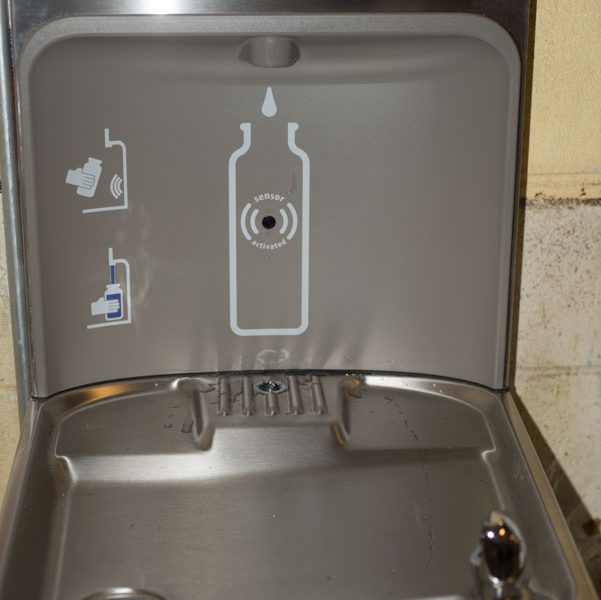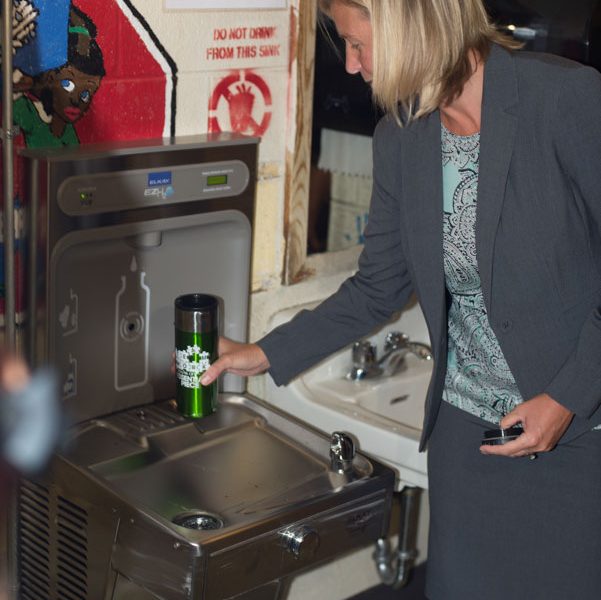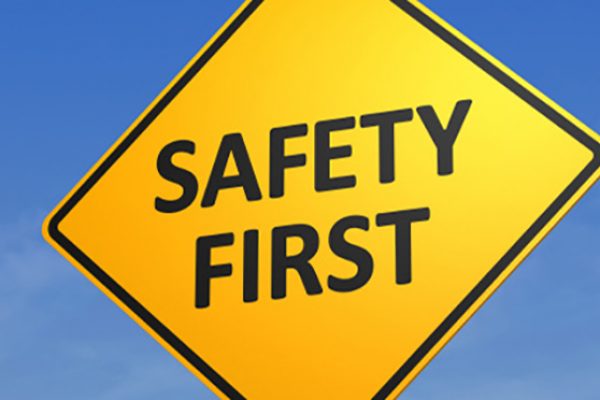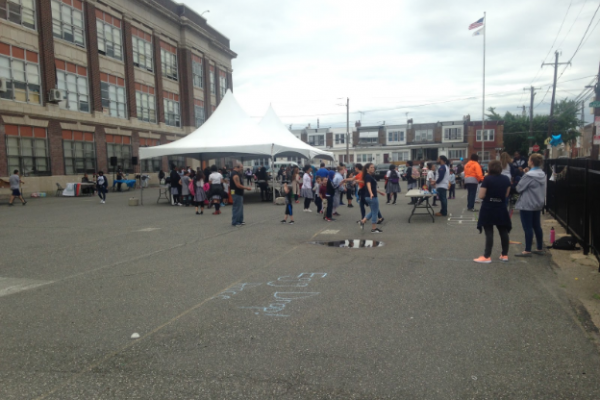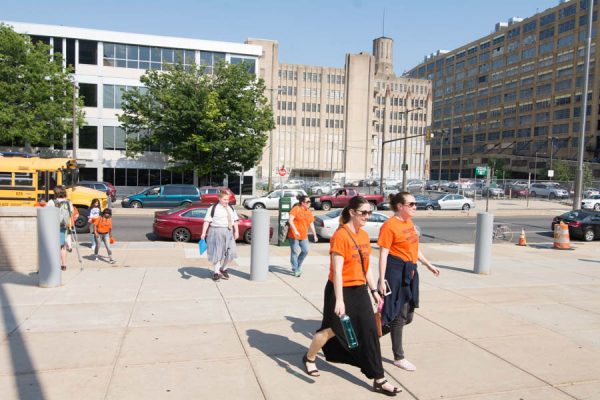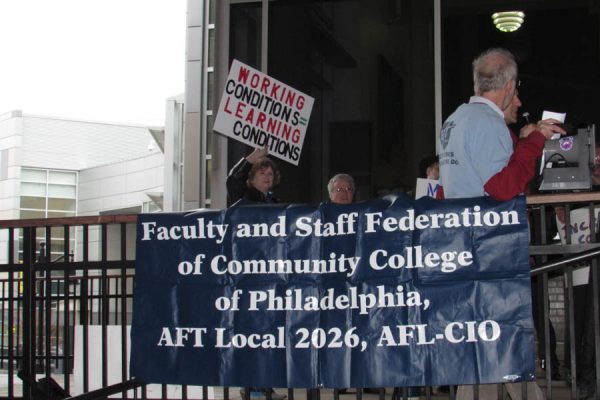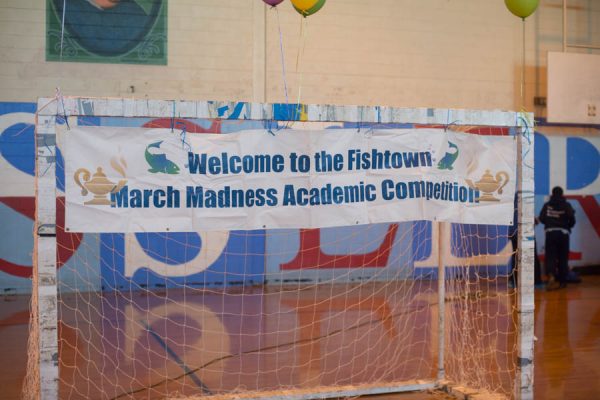School District Unveils New Water Hydration Stations at H.A. Brown School
On August 15, 2016, the School District of Philadelphia announced 43 schools would be equipped with hydration stations at the start of this school year. This decision was made because of a district initiative to have better sustainability, less waste and better energy efficiency throughout their schools.
Each school is gaining a minimum of three hydration stations, which is part of an investment of about $1 million. In a press release, Superintendent Dr. William R. Hite stated that he wants “safe, accessible and appealing water” for all of his students.
Fran Burns, the Chief Operating Officer of the District, introduced the new hydration stations that will be a new addition to the city’s schools this year. She was on site at H. A. Brown Academics Plus School (1946 East Sergeant Street) in Kensington to show off the new stations.
“The water in our school is safe, but we really want children to hydrate throughout the day,” Burns said. She added that hydration “encourages learning” and will positively impact the employees and students as a whole.
The new hydration stations are more than just regular water fountains. In addition to having the traditional stream of water that we are accustomed to, there is also an area to fill a water bottle. A counter on each station displays the number of bottles that have been refilled at that particular station. There may be some programs in place in which donors can provide students with reusable bottles, but that is determined by the principals throughout the district.
The money for this program, which is part of the GreenFutures program is, according to Burns, “centrally funded through the school district.” Each individual hydration station cost $700, which was described as “a steep discount.” The cost of the fountains adds up to about $2,500 per school, including the cost of labor. The goals of the GreenFutures program include increasing waste diversion by 10 percent and decreasing energy consumption by 20 percent. This will be implemented over the course of five years, focusing on five schools at a time.
The new hydration stations will be installed in every school with a deadline of May, but 10 schools will have them for the first day of school. That accounts for 30 new water units that students will see in September.
This announcement to install new hydration stations comes after the School District announced they launched a water-quality retesting project designed to test for lead concentration in drinking water outlets in a sample of 40 schools in Philadelphia.
The set standard that the district allows for lead levels in water is 20 parts per billion. The Center for Disease Control and Environmental Protection Agency recommend that children and pregnant women should avoid drinking water exceeding 15 parts per billion.
Of all the schools in the district, a little more than 45 percent of the water fountains have recently been tested for lead levels. Of the fountains tested, four individual water outlets tested higher than the district was comfortable with, so they were “immediately taken out of service.” The fountains exceeding the maximum lead levels are in schools that are not allowed to be stated yet. However, there will be consistent transparency in the lead levels at each school when the new school year begins.
According to Burns, this has been the practice since “10 years ago [when they said they] had a safe water-drinking program.” The rest of the fountains will be tested before the start of the upcoming school year. The majority of the fountains that were tested had lead level of less than 1 part per billion, which is extremely safe to drink.
Lead in Kensington has been a problem in the neighborhood’s history, so it is promising to see the School District of Philadelphia focus on protecting the students and faculty of the district. Numerous Lead companies existed in the city, and specifically this area, since the 1800s. These companies included Philadelphia Lead Works on Huntington, Western White Lead Company on Hancock, and Standard White Lead, Color and Putty Works on Thompson, as well as others.
Lead was used in many industries, but most commonly in paints and plumbing. Lead was also used to hold stained glass together. In one of the stranger incidents in the history of baking-related crime, two bakers in Kensington, George M. Palmer and Frederick Schmid, were found guilty of using lead chromate in their baked goods to turn their products yellow. Apparently, there was a high demand for yellow bakery items in the 1800s that drove these men to sell food that poisoned the neighborhood.
The GreenFutures initiative is a step in the right direction in the goal of ridding the community of lead that has been intertwined with its history for many generations. Many people may remember Alison Young’s article for USA Today in October 2015 called “More Evidence Children Harmed by Lead near Philadelphia ‘Ghost Factory.’” Even though the use of lead has been banned in many public settings for some time, it is still an issue that is affecting the community. •
